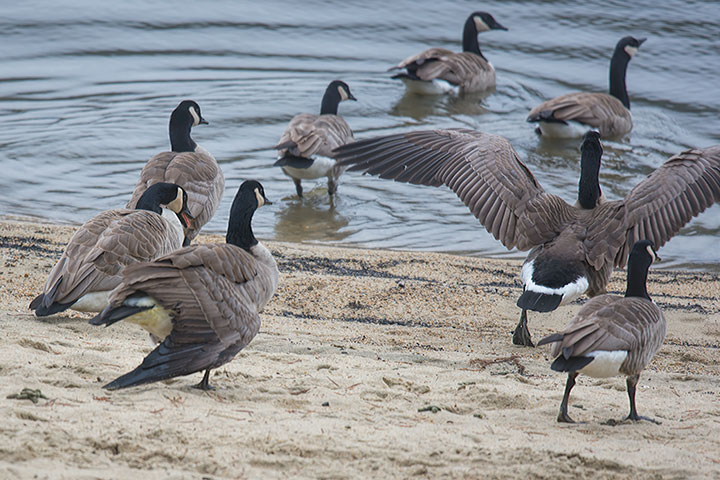There is a goose in this picture that is soon likely to satisfy a coyote.
It is interesting that, despite the large number of Canada Geese to be seen around the Lake, one rarely sees a dead or injured one. Goose fecundity produces many chicks each year, but what happens to this plentitude? I have only seen one goose being eaten along the shore.
However, for the last few weeks I have been watching a good candidate for a forthcoming meal: a goose with a broken wing. As it cannot fly, it is usually alone, but sometimes joins other geese near the shore. While the flock will move farther onto a lawn, Broken Wing finds it dangerous to move more than a few metres from the water’s edge. While it can swim satisfactorily, I suspect that it won’t be long before a coyote gets it.
The goose with the broken wing is on the left.


Odd as I have seen “goose with broken wing” before — last year? or before. Perhaps it sticks around rather than journeying south?
Wendy, there seem to be two populations of Canada Geese around here: those that migrate; those that stay put. Those that migrate generally do so in the early fall. Any goose here now is probably a longterm resident and so wasn’t going to fly off anyway.